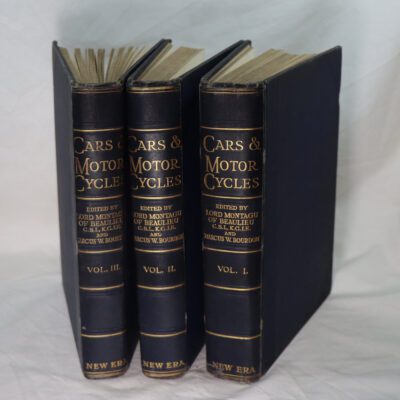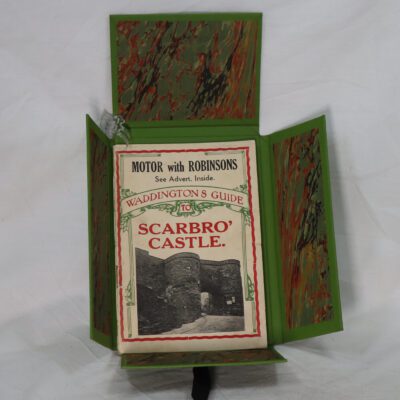The Private Lives of Tudor Monarchs.
By Christopher Falkus
Printed: 1975
Publisher: Folio Society. London
| Dimensions | 18 × 26 × 2.5 cm |
|---|---|
| Language |
Language: English
Size (cminches): 18 x 26 x 2.5
Condition: Fine (See explanation of ratings)
Item information
Description
In a fitted box. Cream calf half bound, gilt heraldic emblems, with gilt title on the spine. Purple cloth boards.
It is the intent of F.B.A. to provide an in-depth photographic presentation of this book offered so to almost stimulate your feel and touch on the book. If requested, more traditional book descriptions are immediately available.
An interesting book. I had no idea that it would be contemporary writings describing the world of the Tudors. And beautifully illustrated.
The House of Tudor was an English royal house of Welsh origin, descended from the Tudors of Penmynydd. Tudor monarchs ruled the Kingdom of England and its realms, including their ancestral Wales and the Lordship of Ireland (later the Kingdom of Ireland) from 1485 until 1603, with five monarchs in that period: Henry VII, Henry VIII, Edward VI, Mary I and Elizabeth I. The Tudors succeeded the House of Plantagenet as rulers of the Kingdom of England, and were succeeded by the House of Stuart. The first Tudor monarch, Henry VII of England, descended through his mother from a legitimised branch of the English royal House of Lancaster, a cadet house of the Plantagenets. The Tudor family rose to power in the wake of the Wars of the Roses (1455–1487), which left the Tudor-aligned House of Lancaster extinct in the male line.
Henry VII succeeded in presenting himself as a candidate not only for traditional Lancastrian supporters, but also for discontented supporters of their rival Plantagenet, cadet House of York, and he took the throne by right of conquest. Following his victory at the Battle of Bosworth Field (22 August 1485), he reinforced his position in 1486 by fulfilling his 1483 vow to marry Elizabeth of York, daughter of Edward IV, thus symbolically uniting the former warring factions of Lancaster and York under the new dynasty. The Tudors extended their power beyond modern England, achieving the full union of England and the Principality of Wales in 1542 (Laws in Wales Acts 1535 and 1542), and successfully asserting English authority over the Kingdom of Ireland (proclaimed by the Crown of Ireland Act 1542). They also maintained the nominal English claim to the Kingdom of France; although none of them made substance of it, Henry VIII fought wars with France trying to reclaim that title. After him, his daughter Mary I lost control of all territory in France permanently with the fall of Calais in 1558.
In total, the Tudor monarchs ruled their domains for just over a century. Henry VIII (r. 1509–1547) was the only son of Henry VII to live to the age of maturity. Issues around royal succession (including marriage and the succession rights of women) became major political themes during the Tudor era, as did the English Reformation in religion, impacting the future of the Crown. When Elizabeth I died childless, the Scottish House of Stuart succeeded as England’s royal family through the Union of the Crowns of 24 March 1603. The first Stuart to become King of England (r. 1603–1625), James VI and I, descended from Henry VII’s daughter Margaret Tudor, who in 1503 had married King James IV of Scotland in accordance with the 1502 Treaty of Perpetual Peace.
Christopher Falkus: Not all editorially inclined publishers are also good salesmen, good businessmen, good managers. Christopher Falkus, though unorthodox, sometimes infuriating and often quite outrageous, delivered the goods for Weidenfeld & Nicolson for year after year in the 1970s when he was its managing director. He was born in 1940, the twin son of the naturalist Hugh Falkus; neither Christopher nor his brother had an easy upbringing. Their mother was left to feed, clothe and educate her children on meagre resources. Despite, or perhaps partly because of this, the boys showed outstanding aptitude – both intellectual and physical. They went first to the Marist convent in Paignton and then to St Boniface’s College, Plymouth. Christopher then went to University College, London, where he was awarded an outstanding First-Class history degree and also won the Derby Prize. After a year as a BBC trainee and a period working for the children’s partwork Knowledge, he emigrated to Australia as a Lecturer in Modern History at Queensland University. In Australia he blossomed – as teacher, researcher, tennis and squash player and cricketer. He also became an enthusiastic and knowledgeable naturalist.
On his return to England in 1968 he forsook academia (in which his brother was to flourish) for the dodgier world of London publishing, first at the British Printing Corporation, where he edited historical partworks. In 1970 he was approached by George Weidenfeld to join his firm, as Publisher of the Art and Illustrated list. Shortly after, he became joint managing director with Alan Miles.
The years he spent with Weidenfeld were testing ones for an irreverent and inexperienced young historian. In 1973, when the firm’s fortunes were at a low ebb, he thought up the “Kings and Queens” series with Book Club Associates and persuaded Antonia Fraser to edit it. He wrote the volume on Charles II and his wife Gila wrote the one on Queen Anne. The success of this major package of mainly excellent royal biographies in large part restored the Weidenfeld fortunes. Other publishing successes were to follow. Falkus’s love of sport brought the revival of the Arthur Barker imprint, his historical expertise introduced a new generation of historians to the list. Amongst authors with whom he worked closely were most members of the Pakenham family, Olivia Manning, A.J.P. Taylor and Kevin Keegan, as well as Morecambe and Wise. His own tastes were eclectic and ranged from wild life and the history of ideas to P.G. Wodehouse and Arsenal.
The managerial problems at Weidenfeld were not dispelled by a healthier balance-sheet. Lines of command were obscured; and strong, talented personalities distorted good management. Falkus taught himself how to manage other people and draw the best from them, by encouragement, by enabling other voices to be heard, by a willingness to let others take the limelight, which – though not always appreciated at the time – led to a period of harmonious relationships and good publishing. He was particularly adept at encouraging younger colleagues and creating opportunities for them.
His departure in 1980 for Associated Book Publishers, where he became chairman of the General Books Group, and his eventual return to Weidenfeld after a brief but unhappy experience of working with Robert Maxwell, were years of increasing stress in his professional life, and the strain eventually told on his health. He refused to slow down or reduce his availability to colleagues and authors. At the end of 1991 he had a heart attack which was not diagnosed until January 1992. In May that year he retired. Then he enjoyed spending time with his family, playing the piano, talking. Friends and colleagues such as John Cleese and John Potter consulted him, and with formidable determination and energy he fought his ill-health to build a successful new career as a freelance writer and editor.
He was completing a history of everyday life in Imperial China on the day of his death.
Christopher Hugh Falkus, publisher: born 13 January 1940, died London 29 March 1995.
Want to know more about this item?

Share this Page with a friend












